Running a giveaway can be an exhilarating way to engage your audience, promote brand loyalty, and generate a wave of excitement. But to be successful and legally sound, you need clear and thorough rules.
You certainly do not want to skip creating rules for your giveaway. Your giveaway rules might be the only thing to save your brand should something terrible happen during a campaign.
We know how daunting it can be to draft a list of rules for your giveaway. So, we prepared a 10-step guide on creating giveaway rules.
Let’s explore each step in depth.
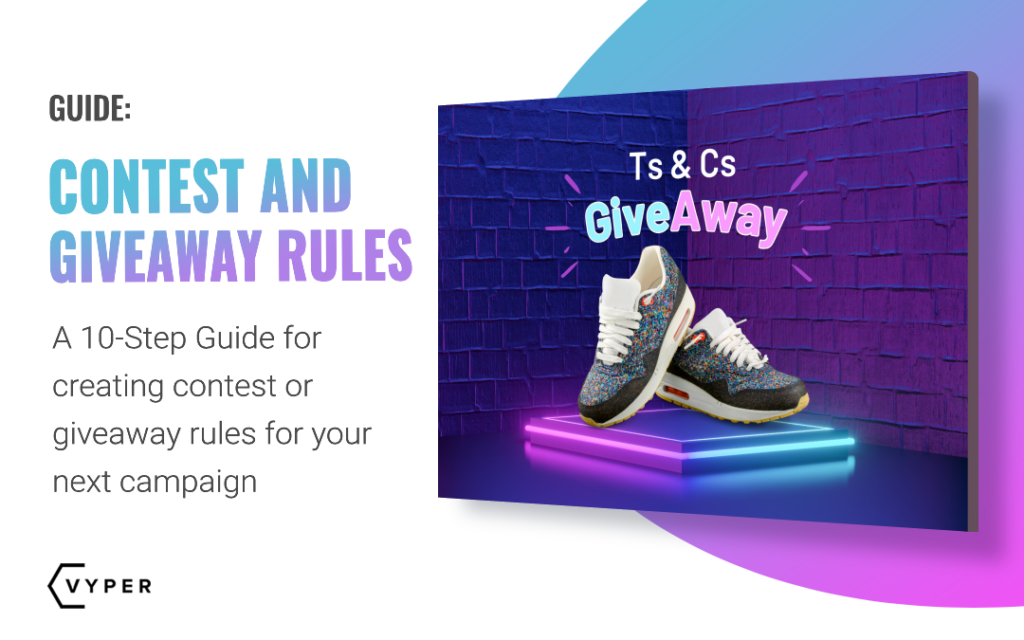
FREE DOWNLOAD: Get all Our Contest & Giveaway Marketing Guides, Checklists, and tutorials that have helped 100’s of brands collect 15k+ emails in under 21 days!
1. Define the Prize
Description: A detailed description informs participants and adds to the appeal. For instance, if it’s a gadget, don’t just mention its name; talk about its key features, color options, and unique selling points.
Value: By stating the exact or approximate retail value, you bring transparency and give participants an idea of the prize’s worth.
Limitations: Are there any warranties? How will the prize be delivered? Answering such questions reduces ambiguity.
Showing Off Your Prize
Q2C is a YouTube VR Gamer that frequently uploads content primarily focused on VR games and gaming. He has a small audience of VR gaming enthusiasts and is looking to build up that audience with a giveaway.
Giving away a VR headset is an excellent way to attract more VR enthusiasts to Q2C’s channel. The Meta Quest 3 is an amazing VR headset with many class-leading features. Q2C ensured that every bit of detail regarding the prize was on display.
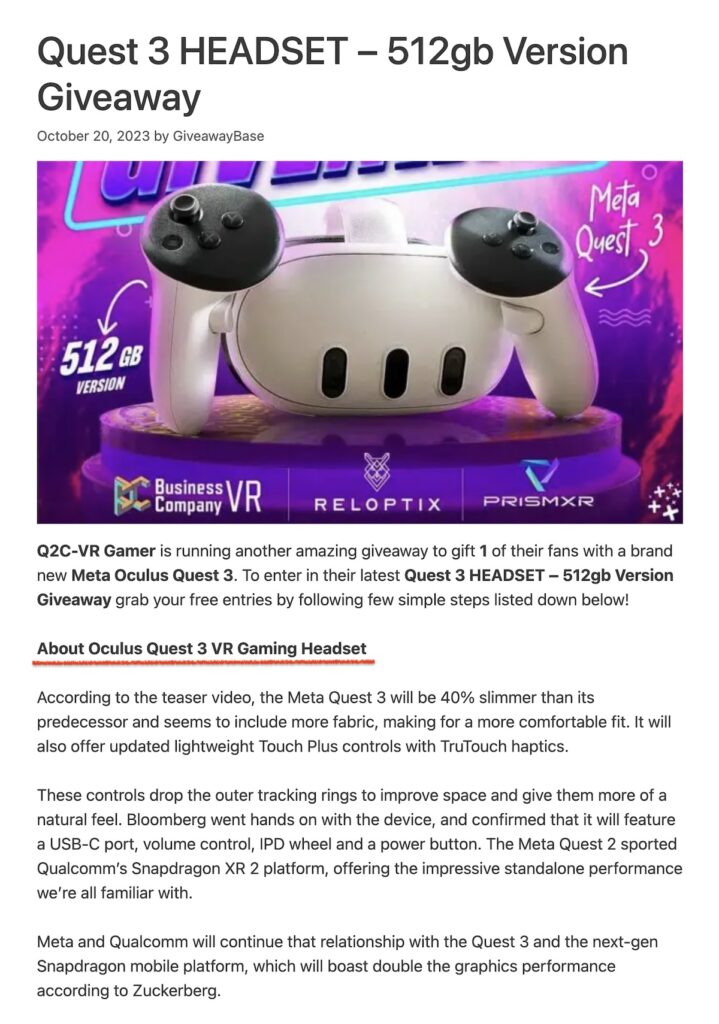
The abundance of info regarding the VR headset can help entice people further to enter the giveaway. An official Meta Quest 3 video is embedded further down the page. Videos are an excellent way to deliver info quickly to an audience and show off the prize’s best parts.
More info on the giveaway prize value, the end date, and who the giveaway is open to is also included below.
2. Eligibility Criteria
Age Limit: While 18 years old is common, some giveaways, especially those with adult content, might require participants to be 21 years or older.
Location: Be clear about shipping constraints. International shipping can be expensive and subject to customs duties. It is also crucial to state if the giveaway is limited only to people in your country, state, continent, or worldwide.
Exclusions: To avoid conflict of interest, excluding company employees and their families is standard.
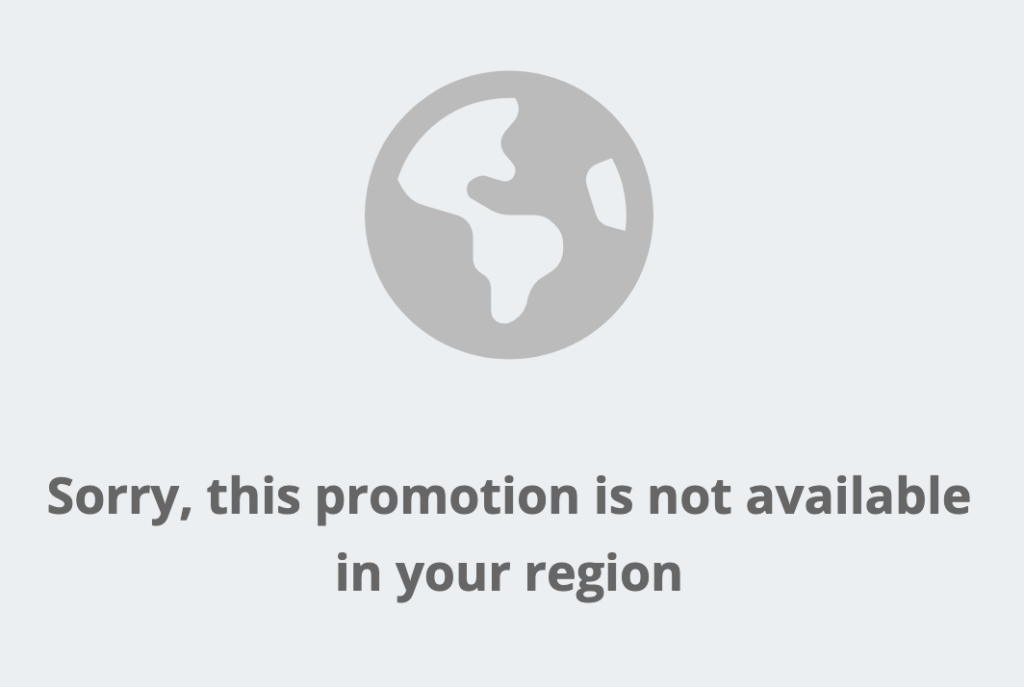
Setting up a social media giveaway is a common mistake, only to forget to specify restrictions like age, region, etc.
Imagine the dread of shipping your prize overseas when you intended to host a giveaway exclusively for people in your country. This hits especially hard if your core audience only exists in your country alone!
The same can be said for excluding age restrictions. It can pose a problem having to announce an underage person as your giveaway winner when your prize is most suited for adults. You will need to stipulate that people under the age of 18 who enter will be automatically disqualified.
Conflict of interest is another crucial aspect of giveaways that is regularly overlooked. It can hurt your brand if people find out that the winner of your giveaway has ties to the company hosting the campaign.
It will seem like the giveaway was fixed as people will assume the winner was ‘hand-picked’ because of their relation to the brand hosting the giveaway.
3. Entry Method
Entry Channels: Delineate where entries can be made. Cross-platform campaigns can boost reach.
Steps: Provide a step-by-step guide, perhaps with visuals or a short video tutorial.
Multiple Entries: If allowed, describe how this can increase their chances, but ensure it doesn’t spam others.

Many online giveaways merely state the prize on offer and a link to enter. There is no explanation of the entry requirements, just a link that says, “Click here to enter.”
This approach might seem OK as people will click the link to go to a giveaway landing page to enter. However, most people will want to know giveaway entry requirements upfront. Not knowing all the details and only being provided with a link can come off as being spammy.
It’s best to explain the basic requirements to enter the giveaway landing page. Then, place a link or form to enter below. The VYPER demo giveaway above clearly states that Fortnite players must earn a Victory Royale to enter the giveaway.
Giveaway platforms like VYPER allow brands to add “Bonus Actions” functionality to their giveaways. This means that entrants can submit more entries, refer others, engage on socials, download apps, and more. Every action will earn an entrant additional points that will boost their chances of winning.
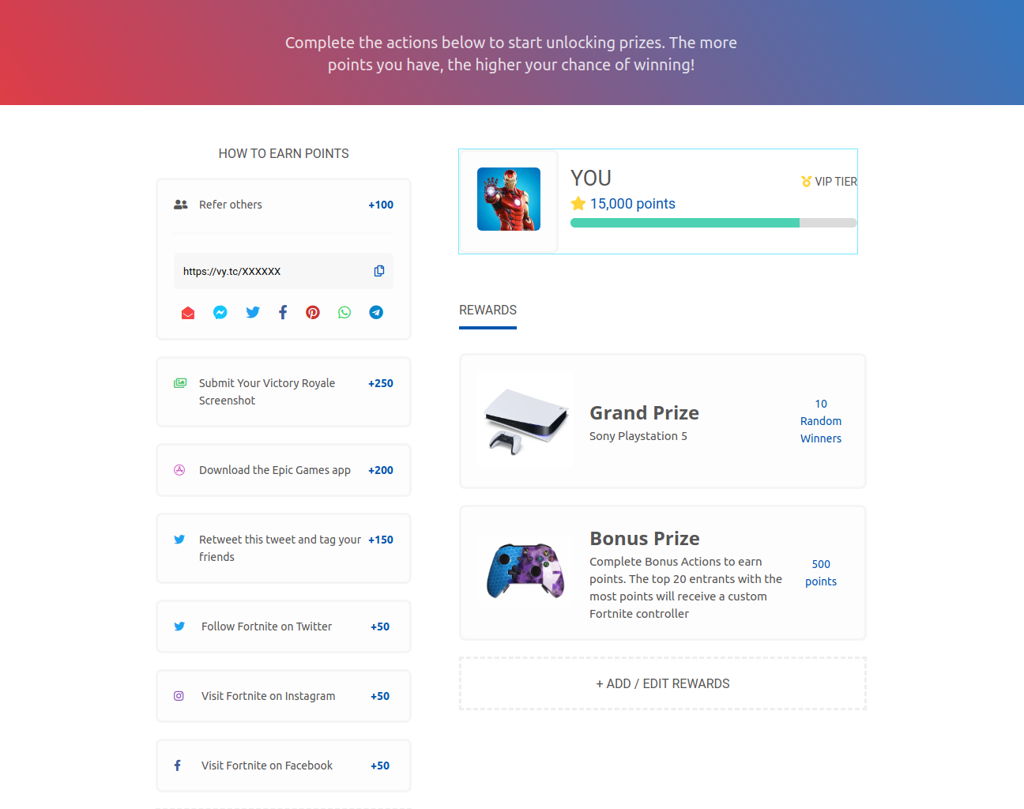
It’s important to state these options effectively as it can help to add more value to your campaign. VYPER has a built-in system to manage bonus actions (pictured above) automatically. You can state that “it’s easy to compete and earn points” when referring to bonus actions.

4. Campaign Duration
Start and End: Consider peak times when your target audience is most active. This can maximize entries.
Time Zone: A giveaway targeting a global audience? Consider using UTC for universality.
We at VYPER always recommend hosting your giveaway over two weeks (minimum). Two weeks is the optimal time to launch, promote, and announce the winners of your giveaway.
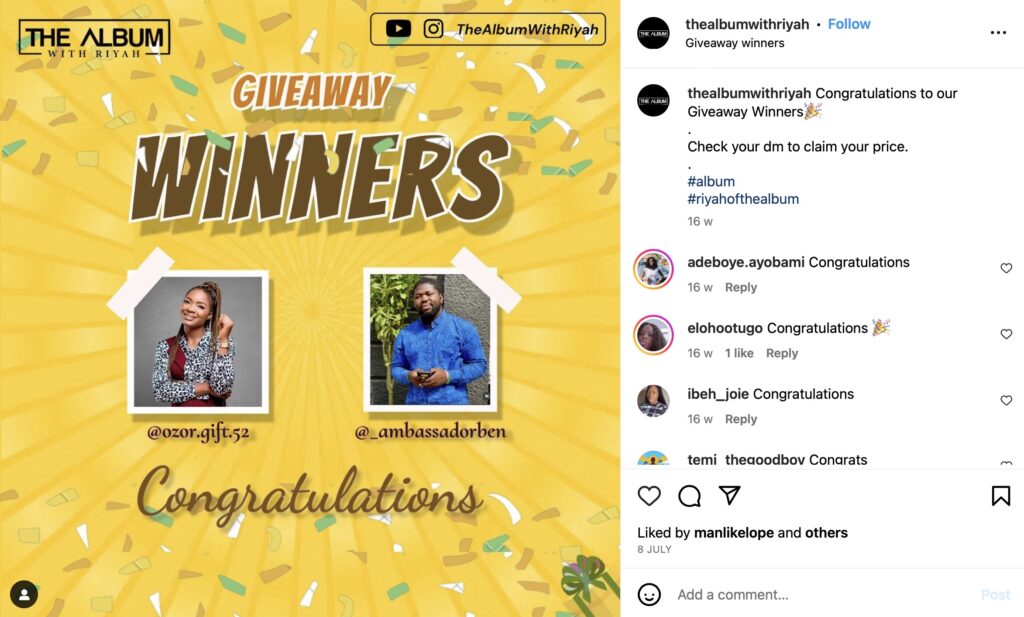
Running a giveaway longer than two weeks has its risks. Entrants will become restless as they wait for the winner announcement. People can also lose interest in the giveaway and your brand in that manner.
Two weeks is the sweet spot. You can launch your giveaway on a weekend with a social media post or two during the first week. Then, remind people to enter the giveaway before it ends during the second week.
Two weeks is also a decent amount of time to find the maximum amount of entrants and exposure.
Ensure that the giveaway duration and end date are specified in the rules. Also, add the exact time the giveaway ends, as people who only notice your campaign on the last day will know exactly how much time they have left.
5. Selection Process
Method: Random is straightforward, but merit-based can increase the quality of participation. For instance, the most creative comment can win. Or the person with the most points wins.
Announcement: Consider making this a live event on social media platforms to boost excitement and engagement.
Most giveaways select winners at random. Platforms like VYPER have a contest picker feature that allows you to pick your winner at random, eliminating that cheating element from your campaign.
Ensure that you mention that winners are selected at random in your giveaway rules. If you don’t, then you may run the risk of entrants performing unnecessary bonus/promotional tasks in the hopes of being rewarded for their efforts.
Make it clear in the rules that the campaign you are hosting is a giveaway with a random winner or a contest that will see a winner through their actions. If you are hosting the latter (a contest), set up your campaign accordingly with bonus actions to allow people to earn points to win.

If you only have a few bonus actions in mind, the points you will have available to reward contestants will be limited.
6. Prize Claim Process
Notification: Personalized messages can make winners feel special. Also, specify the platform of notification to avoid confusion.
Time Frame: A 48-hour or one-week claim window is standard. It strikes a balance between giving winners ample time and ensuring the campaign concludes promptly.
Unclaimed Prizes: Consider having a backup list of winners or rerunning the selection process.
It’s crucial to announce the winner of your giveaway on as many platforms as possible. You can start by announcing the winner in a social media post. This is especially important if you host an Instagram giveaway (or any social media giveaway in general).
If you have collected emails during the campaign, send out a giveaway winner announcement email to all entrants.
Some winners may want to remain anonymous. However, brands prefer to announce an actual winner as other entrants may become skeptical upon hearing that the winner is anonymous. If you do plan on Not Allowing anonymous winners, then clearly state so in the giveaway rules.
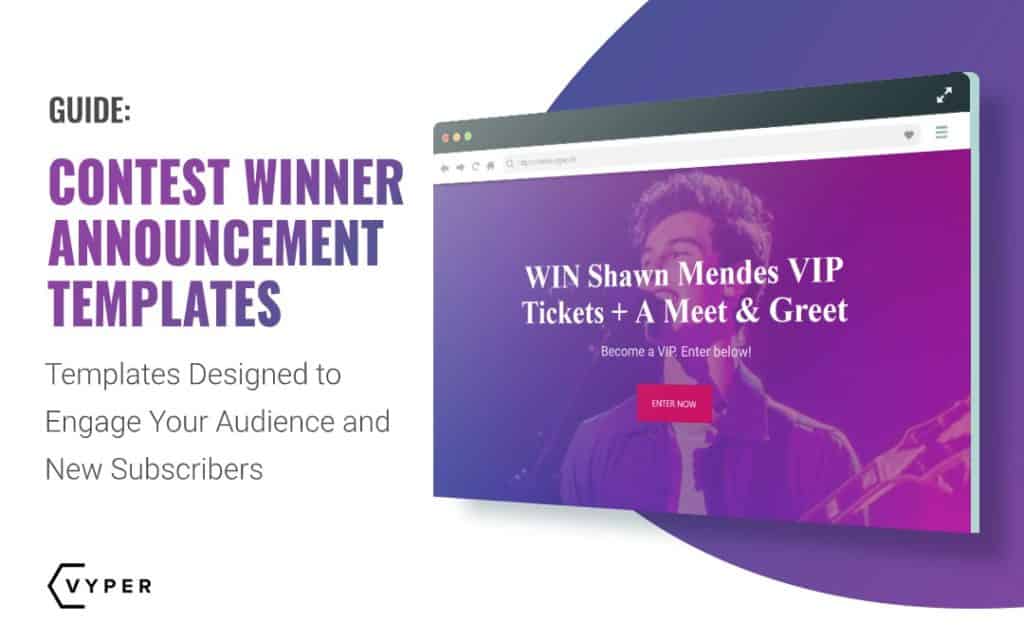
Looking for templates to announce your giveaway or contest winners?
Click here for Giveaway and Contest Winner Announcement Templates.
7. Legal Considerations
Liabilities: This protects you from unforeseen circumstances like someone getting injured using the prize.
Data Use: GDPR, CCPA, and other data protection regulations emphasize the importance of clearly stating data usage.
Regulations: Different countries/states have varied regulations. It’s always safe to include a clause saying the giveaway isn’t affiliated with platforms like Instagram or Facebook.
The law in your state or country may not be the same in other states or countries. If you are choosing to host an international giveaway, then you should consider the laws around giveaways in countries abroad.
Especially with sweepstakes. The law around sweepstakes is strict in certain countries as compared to other places like the UK.
If you are unsure how the law in a foreign land or state may affect your contest, then perhaps keep your campaign available to local users only.
Data regulations such as the GDPR and CCPA are in place to protect the consumer’s privacy and personal data. Giveaways serve as a means of collecting data and generating leads. Ensure that your data collection methods align with the law in your country.
It’s also crucial to include a clause that states that your brand is not responsible for any injury or damage caused by the prize once it has been delivered to the winner.
Social networks like Instagram have their guidelines regarding giveaways and contests on their platforms. You can link to these guidelines in your giveaway rules, which will allow your entrants to find an official resource from the social network.
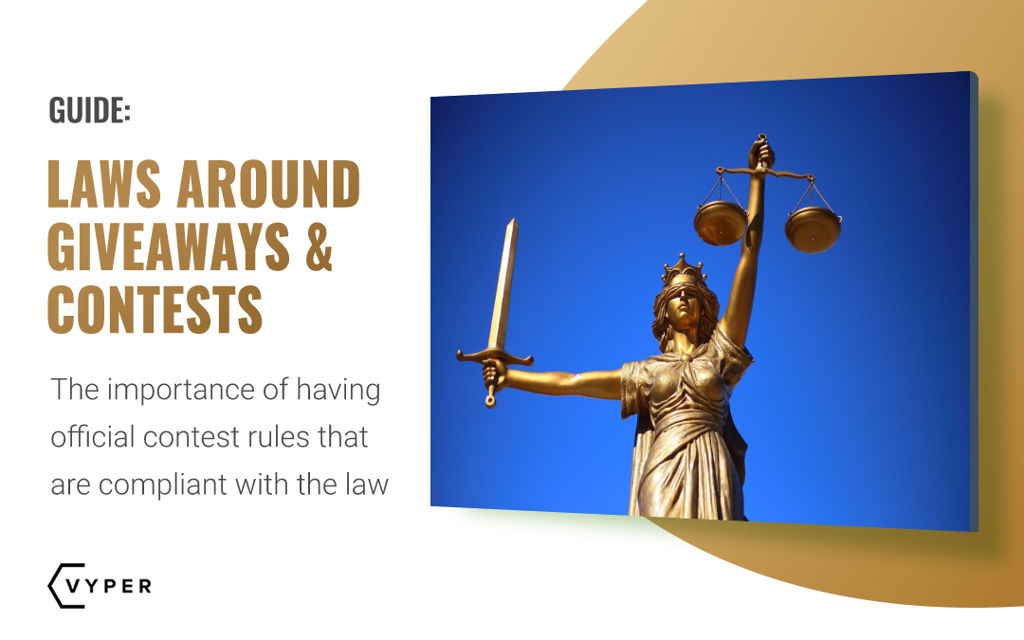
We actually have another post with an in-depth look at the law around giveaways and contests.
Click here to learn more about the Law Around Giveaways and Contests.
8. Rights on Submitted Content
Usage: Be transparent about how you plan to use user-generated content. This could be for promotional activities, reposting, or advertisements.
Credits: Crediting boosts trust and can motivate more users to participate, hoping for a shoutout.
User-generated content is becoming increasingly popular. UGC is defined as content created by the end user, fan, or customer—like a selfie with the brand’s product in the picture. UGC receives a ton of engagement online, which has led to brands hosting UGC Contests.
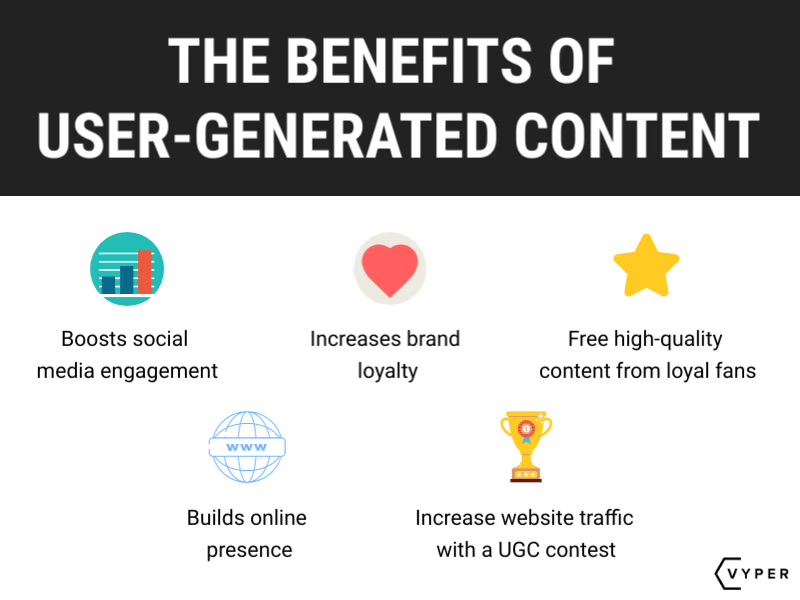
If your giveaway or contest is set up to produce UGC, you should make it known to those participating in the campaign. Also, note if all content generated from the campaign will be the property of the brand or the property of the user.
If you do plan on mentioning the user (that created the content) when posting the UGC, mention that in your rules. This can encourage more people to participate as it can serve as a means to promote themselves.
If you don’t plan on mentioning the creators of the UGC produced in your contest, state that in the rules. You can also provide a reason for this like your brand owns all content produced from the campaign that you are running.
9. Disqualification
This discourages dishonest entries. Lay out consequences for behaviors like using bots, plagiarizing content, or entering with multiple fake accounts.
Clearly state that participants will be disqualified if they happen to break any of the giveaway rules set by you. This statement can help serve as a means of keeping entrants in line while ensuring that the campaign runs smoothly.
If you are hosting a specific type of contest, like a UGC contest or referral contest, then provide examples of actions that may constitute an infringement that leads to disqualification. This can be someone copying another user’s idea or work or someone supplying random email referrals of people they do not know.
Spam and bots is a major issue with giveaways and contests. Make it known in the rules that any user who behaves like a bot (or spam) will risk being disqualified.
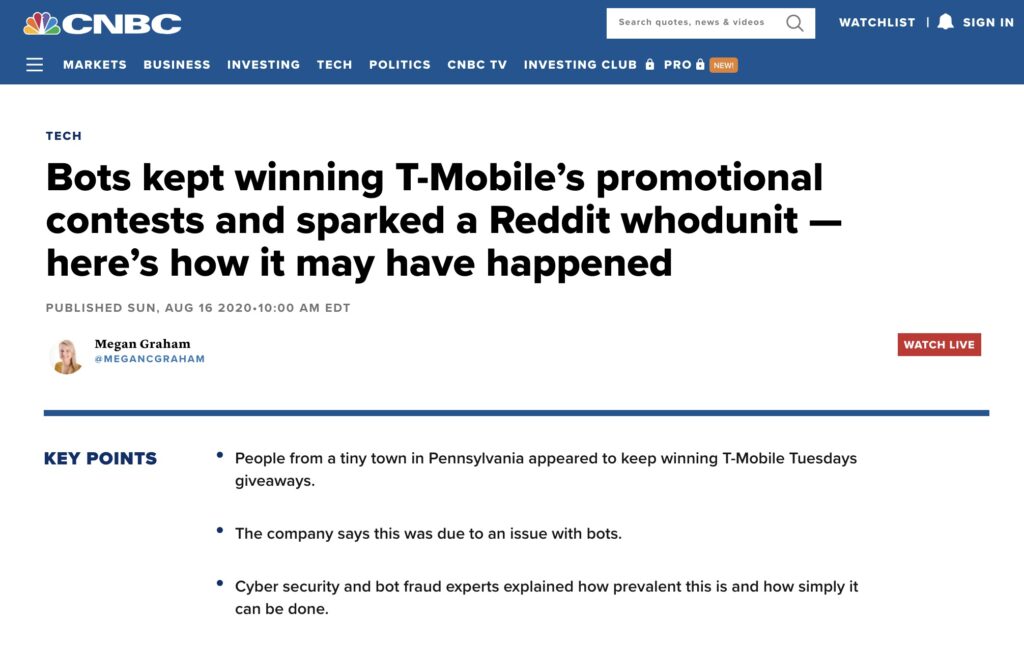
10. Amendments and Cancellation
Real-world events, website downtimes, or global crises can interrupt a giveaway. Your rules should accommodate for unforeseen changes or cancellations, ensuring participants are kept informed and aren’t left disappointed.
It is crucial to have a clause in your giveaway rules to allow you to cancel the campaign. However, the reason for canceling or stopping the giveaway/contest has to be a legitimate reason. Like the passing away of a person or a devastating event that affects your brand and community.
For full transparency, you can list the examples above as reasons for potential cancellations or postponements. This way, your audience will have a good idea of what to expect in the case of an emergency.
TL;DR: Creating Giveaway Rules
Crafting detailed giveaway rules can seem daunting, but it’s an essential foundation for a successful and stress-free campaign. By being clear, transparent, and fair, you protect your organization and ensure a positive experience for your participants.
Having a clear set of rules for your giveaway is a professional and respectable way to carry out your campaign. This can increase public opinion regarding your brand. All while regulating negative activity like spamming or cheating.
And remember, legal counsel is invaluable in these situations, ensuring all bases are covered.
Here’s to a successful and exciting giveaway!
Jack Paxton is the co-founder of VYPER, a marketing tool that helps brands build email lists, social followings, and revenue using viral giveaways, referral, and reward programs. After millions of dollars spent testing different marketing strategies at his marketing agency. He then also co-founded Hyax a fast, conversion & design-focused course and funnel builder for creators.

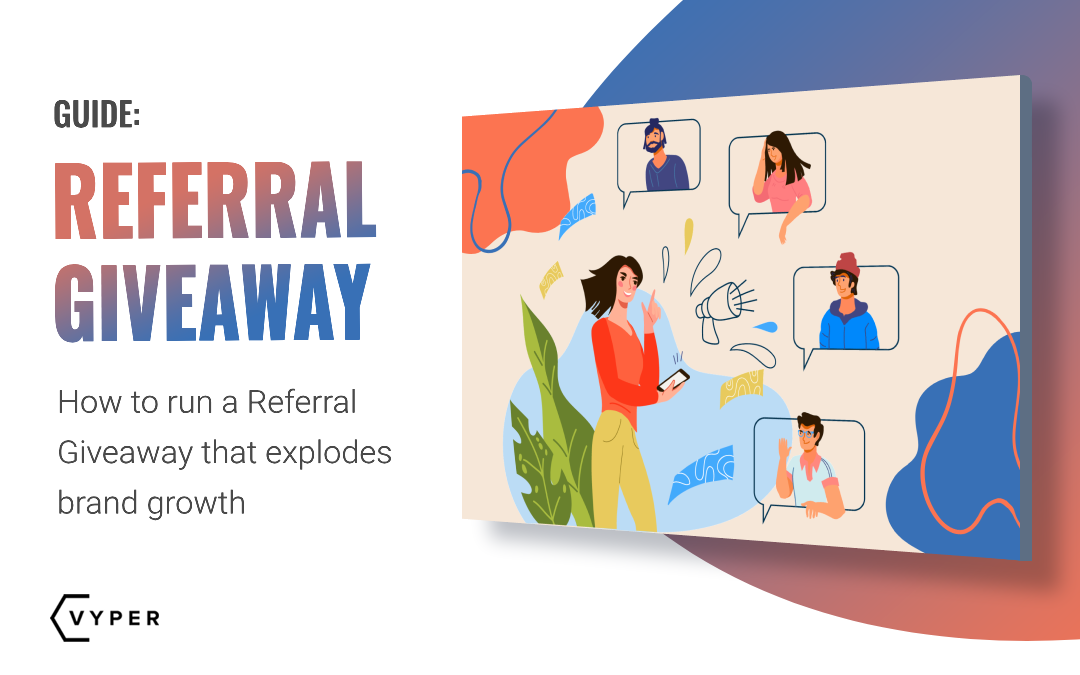
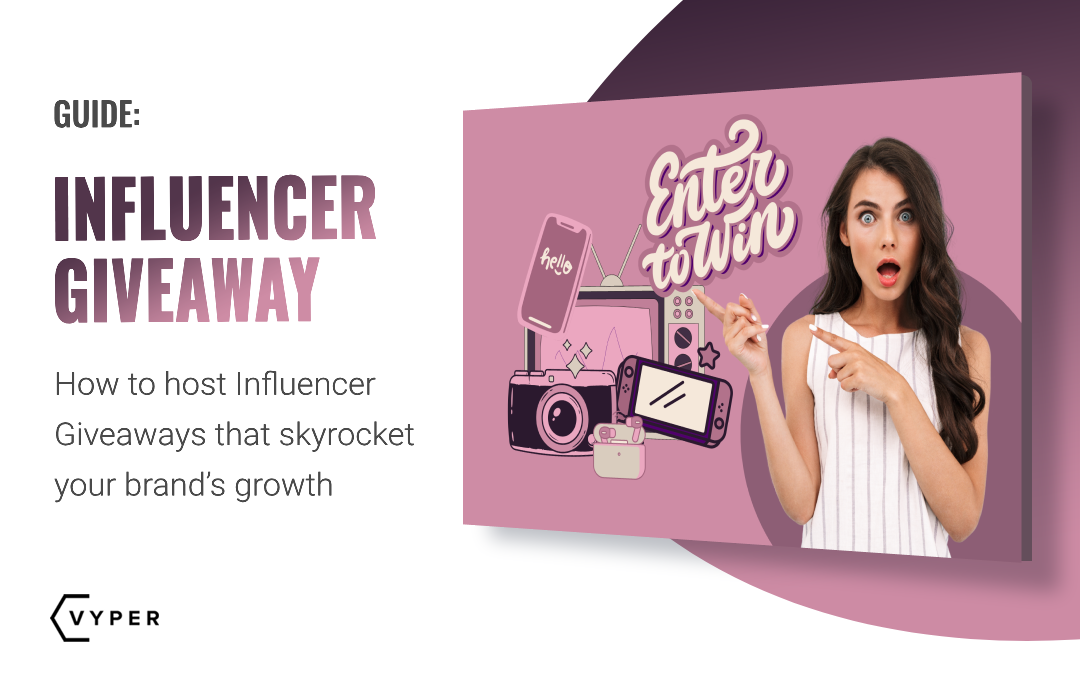
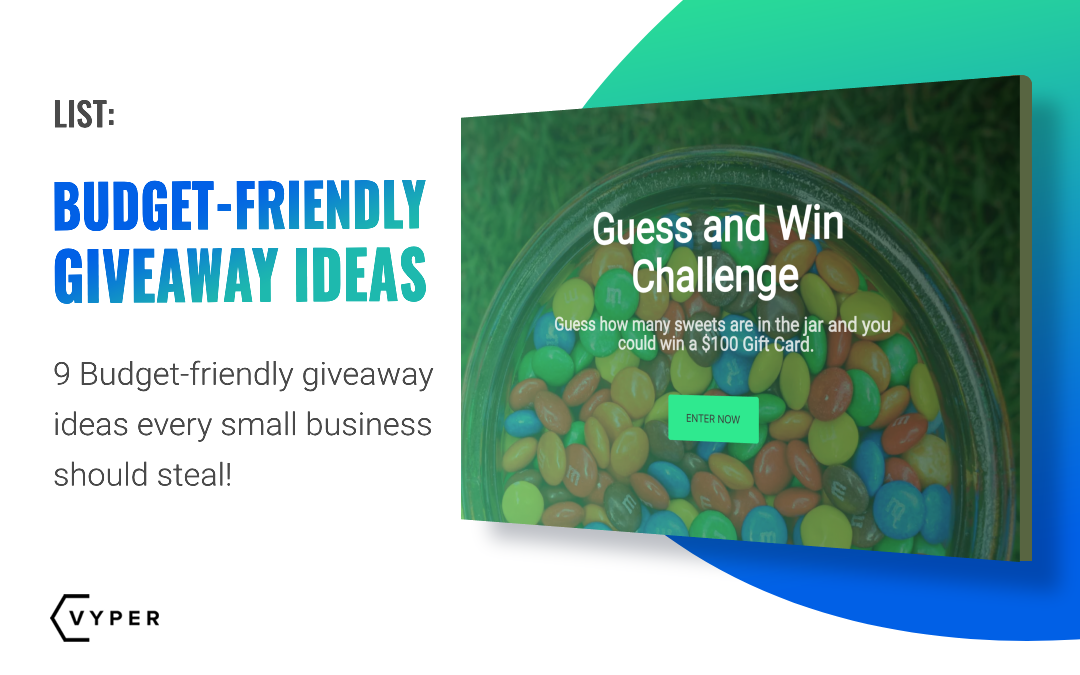
The instructions are presented with remarkable clarity and brevity, making them incredibly beneficial for individuals seeking to execute a successful contest. I’m immensely grateful for the dissemination of such valuable insights.
Thanks For sharing.
Thanks for sharing the article, It’s really help full.
It’s a pleasure!
It’s a pleasure!
Your post has made me rethink my approach to [topic]. It’s a game-changer!
The practical advice you’ve shared is invaluable. Thanks for the actionable tips!
Great to read such an informative article. Thank you so much for sharing it.
Fantastic guide! These 10 steps make it so easy to set up contest and giveaway rules across different social media platforms like Facebook, Twitter, and LinkedIn. Clear and concise steps that are super helpful for anyone looking to run a successful contest. Thanks for sharing this valuable information!
great sir very helpfully article thanks for sharing